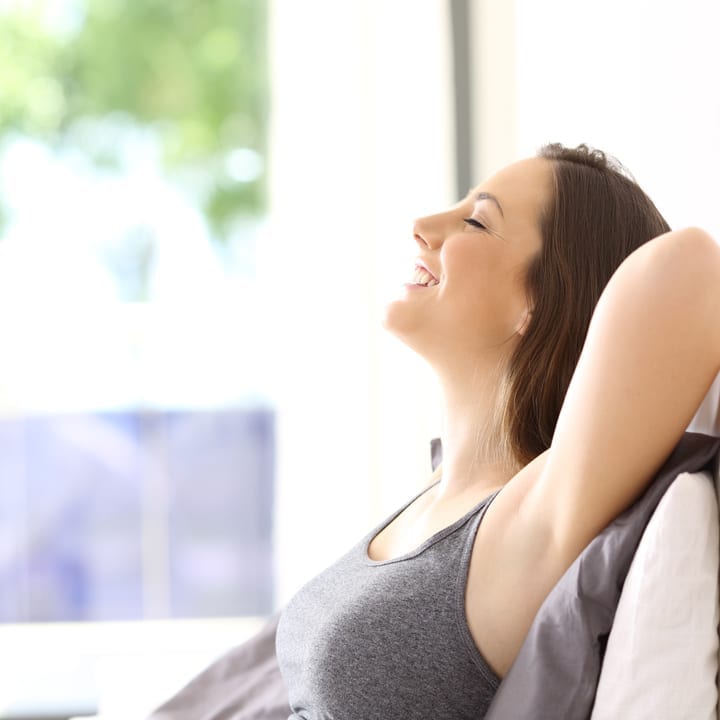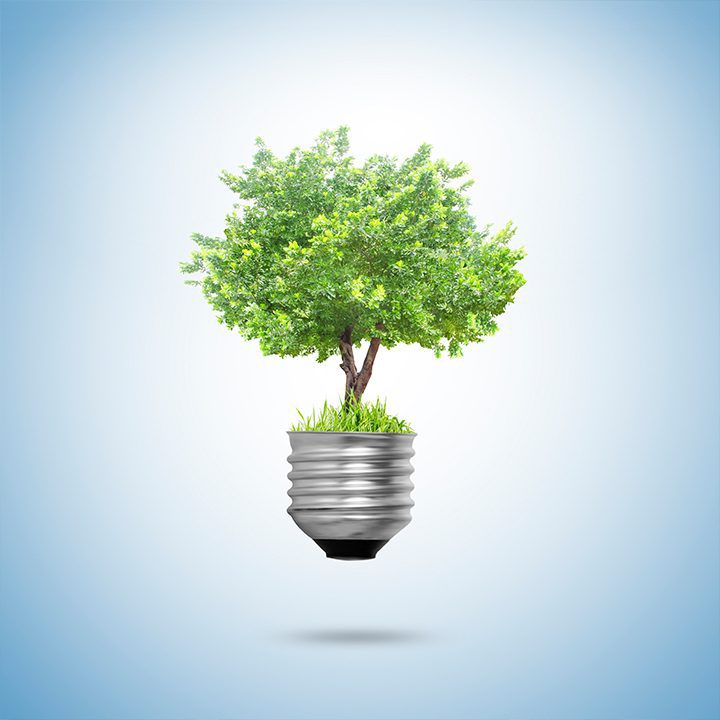
Save money on your household bills
When considering evaporative cooling prices, at a time when Australians are faced with high energy costs, there is plenty of debate when it comes to evaporative vs refrigerated air conditioning running costs. The reality is that one of the most significant benefits of evaporative air conditioning is that running costs are far lower than refrigerated options. With increasing energy prices and concerns for environmental sustainability, evaporative air conditioning has a significant and increasing edge on reverse cycle, when it comes to energy efficiency, performance and lifestyle.
- Modern and innovative evaporative cooling can save you up to 80% on energy bills compared to a reverse cycle air conditioner.*
- Evaporative air conditioners use a small amount of water, in many instances using almost 83% less water over the summer months than a shower**.
Where do I find evaporative air conditioning prices/evaporative cooling prices?
Evaporative cooling prices vary depending on the size of building, location and specific requirements. You will need to speak with a qualified dealer to get a price on evaporative air conditioning. You can find a dealer here.

Fresh, cool clean air
Fresh air is a major benefit of evaporative air conditioning, supplying 100% fresh, cool, outside air, all while delivering superior energy efficiency compared to a refrigerated equivalent. As the fan within an evaporative air conditioner draws outside air through the cooling pads, not only is the air chilled it is also filtered from impurities and pollens – a bonus for allergy sufferers.
It is important to remember that cooled air inside a home is not recirculated, so a door or window is left open for this air to escape, providing a home with a complete change in the air at least every two minutes.
Learn about Safer-AirTM and ventilation
Keep your home secure
Keep your home cool without leaving your doors and windows open. Install a security relief vent in your home and you can run your evaporative air conditioner while you are out, with all your windows and doors safely closed and locked. Your home will stay cooler as cooled air is released into the roof space. When you return home, open your windows and doors as normal, maintaining the fresh cool air throughout your home and open living areas.

Enjoy the peace and quiet
Our evaporative air conditioners have a reputation for being exceptionally quiet, so you won’t hear a thing as you sleep.

Don’t worry about closing up your home
One of the great advantages of an evaporative air conditioner is that doors and windows can be left open – which is great news for people with children and pets who like to frequently come in and out throughout the day. That convenience doesn’t have to compromise your home security because Security Relief Vents can be fitted into a ceiling – which means you can sleep easy with all your doors and windows locked while the system runs overnight.

Environmentally friendly
Evaporative air conditioners use far less electricity compared to refrigerated systems, therefore, fewer fossil fuels such as coal and natural gas are consumed in the production of electricity. Evaporative air conditioning systems contain no harmful synthetic refrigerants. Compare this to refrigerated systems which use potent greenhouse gases like hydrofluorocarbons or chlorofluorocarbons, which deplete the ozone layer. The power consumption of just one ducted reverse cycle air conditioner can result in up to 1.6 tonnes of harmful CO2 being pumped into the atmosphere each year.
Seeley International invests millions of dollars in Breezair’s advanced technology to achieve the best cooling across a range of climates. Evaporative air conditioning is used around the world including in some of the harshest climates. It is a suitable energy efficient and cost effective cooling solution for most Australians.
Does evaporative air conditioning work in humid climates?
Evaporative air conditioning relies on the basic principles of evaporation, where warm or hot air passes through water which evaporates to lower the air temperature. For evaporation to take place, humidity needs to be below 100%, so the air can begin to absorb water. Air can hold a certain amount of water vapour, and the degree of water absorption will depend on how much it is already ‘holding’. In humid climates, Breezair can provide comfort by increasing the airflow. Breezair units include a Hushpower® motor and a unique centrifugal fan to increase the flow of air via ducts throughout the house. Evaporative air conditioning works especially well in areas that record mostly hot and dry conditions, as the humidity in the air is typically low.
In climates that have high humidity and high temperature simultaneously, evaporative air conditioning may not be the most effective cooling solution. Speak to a trained air conditioning specialist today and find the right air conditioning solution for your home or view Seeley International’s refrigerated cooling system options.
There’s never been a better time to invest in an evaporative air conditioner which is simple to maintain and operate and offers superior product performance. With energy prices escalating and Australian summers typically involving heat waves, evaporative air conditioning offers a significant and increasing edge on reverse cycle, when it comes to energy efficiency, healthier air flow, performance and lifestyle.
Ducted evaporative cooling is one of the oldest and most beneficial forms of keeping cool. Evaporative air conditioners also have many key advantages over refrigerated air conditioners that keep more money in your pocket and less pollutants in the air.
As the name suggests, an evaporative air conditioner uses evaporation to help cool the air. Based on the principles of evaporation, hot and dry outside air is pumped through water-soaked cooling pads using an evaporative cooling fan. As the air is pushed through the cooling pads, the water evaporates and the heat in the air is absorbed, which lowers the air temperature. A fan then pushes the cool air throughout a house via a network of ducts.
It is important to remember that cooled air inside a home is not recirculated, so a door or window is left open for this air to escape, providing a home with a complete change in air at least every two minutes.
Evaporative cooler efficiency
At a time when Australians are faced with high energy costs, there is plenty of debate when it comes to evaporative vs refrigerated air conditioning running costs. The reality is that one of the most significant benefits of evaporative air conditioning is that running costs are far lower than refrigerated options.
In fact, a ducted whole-house reverse cycle air conditioning system is accepted to be the biggest money pit when it comes to home cooling, costing between $2.45 – $3.45 * per hour to run. Faced with such high running costs, it is staggering to think that nearly half of all Australian households (49%) ** still opt for reverse cycle air conditioning as their main form of cooling and heating.
However, modern and innovative evaporative cooling products see savvy consumers save up to 80% on energy bills when compared to a reverse cycle air conditioner.***
Better indoor air quality
When the weather heats up there is nothing worse than being shut away inside breathing stale air for hours on end. Fresh air is a major benefit of evaporative air conditioning, supplying 100% fresh, cool, outside air, all while delivering superior energy efficiency compared to a refrigerated equivalent. As the fan within an evaporative air conditioner draws outside air though the cooling pads, not only is the air chilled but it is also filtered from impurities and pollens – a bonus for allergy sufferers.
Easy maintenance
Regular service by a qualified technician from time to time will ensure the unit continues to run at its peak efficiency and maintain low evaporative running costs. Organising an evaporative cooling service is fast, simple and easy to arrange through a network of dealers and service agents throughout Australia.
Evaporative air conditioners are eco-friendly
Refrigerated cooling can not only cause the air to become dry inside a home, but it also uses chemicals which can damage the environment. In comparison, evaporate cooling is based completely on natural processes which cools air using water, with no chemicals involved.
Compared to refrigerated air conditioning, the air released from evaporative coolers is never re-circulated, and is constantly replaced with fresh air – meaning your eyes and throat won’t become irritated and people with respiratory and health issues can enjoy their time indoors.
Water usage
Evaporative air conditioners use a small amount of water, in many instances using almost 98% less water than a shower over a year. A Breezair evaporative air conditioner for example, uses around 15 litres of water a day averaged over a year. This is far less than a front loading washing machine which uses around 60 litres of water for one wash, or a top loading washing machine that uses on average 150 litres of water for one wash. ****
Better for the environment and better for you
Opting for evaporative air conditioning means that you will not only help the environment but you will also experience natural, cool, fresh filtered air. Evaporative air conditioners use far less electricity compared to refrigerated systems therefore, less fossil fuels such as coal and natural gas are consumed in the production of electricity. Evaporative air conditioning systems contain no harmful synthetic refrigerants. Compare this to refrigerated systems which may use potent greenhouse gases like hydro fluorocarbons or chlorofluorocarbons, which deplete the ozone layer. The power consumption of just one ducted reverse cycle air conditioner can result in up to 1.5 tonnes of harmful CO2 being pumped into the atmosphere each year. A Breezair evaporative air conditioner is so efficient it produces less than one tenth of this volume. ^
Add moisture to the air
Evaporative air conditioning can also help to slightly increase the amount of moisture in the air. This is especially beneficial for people living in dryer climates who can find it difficult to breathe or experience dry and cracked skin when using refrigerated options.
Flexible security
One of the great advantages of an evaporative air conditioner is that doors and windows can be left open – which is great news for people with children and pets who like to frequently come in and out throughout the day. That convenience doesn’t have to compromise your home security however, because Security Relief Vents can be fitted into a ceiling – which means you sleep easy with all your doors and windows locked while the system runs overnight.
Whisper quiet operation
In the dead of night there’s nothing more annoying than a noisy hum of an air conditioner. Seeley International’s evaporative air conditioners have a reputation for being exceptionally quiet, so you won’t hear a thing as you sleep, particularly the Breezair which is renowned for being whisper quiet.
How is an evaporative air conditioner installed?
Evaporative air conditioner installation is completed by a qualified trade person who can connect and install the roof top unit, ducting, water, power and controller. Contacting a reputable dealer is the best way to organise air conditioning installation to ensure you receive a comprehensive warranty, after sales service and peace of mind. Dealers can also assist in accurately estimating the unit capacity best suited for your lifestyle and home size.
Spare Parts and Service
Evaporative air conditioner parts are readily available and can be bought direct from the manufacturer, through a dealer or distributor with installation generally offered in conjunction with the part being purchased. Evaporative cooling pads are popular replacement parts that are simple to remove and replace by a qualified trade person and their replacement helps optimise running efficiency and effectiveness.
References
* According to Canstar Blue – How much electricity does my air conditioner use? http://bit.ly/2iUA389
** Australian Bureau of Statistics – sources of energy used by households http://www.abs.gov.au/ausstats/abs@.nsf/mf/4602.0.55.001
*** Based on approximate running cost figures sourced from publicly available data. Assumes a whole house area of 166 square metres, with 300 hours usage, 60% duty cycle for air conditioners, and an electricity tariff of 28 cents/kWH. Note that evaporative coolers also use water. Correct at time of publishing. 90% running cost saving based on a Breezair 16kW costing $37 per year to run, compared to a reverse cycle 20kW costing $383 per to run (not zoned standard efficiency).
**** South East Water Corporation article: ‘How much water do you use’ http://www.southeastwater.com.au, 10/2015. Breezair usage calculation is by Seeley International – based on Melbourne 2005 weather data using 115m2 house with medium to large Breezair evaporative air conditioner unit running for 687 hours per year. Note all figures are based on common use assumptions.
^ Seeley International calculations, based on publicly available data (2008). CO2 emissions based on 1.08kg CO2 e/kWhr electricity purchased from grid for Victoria. Data sourced from Part 6 or schedule 1 to the National Greenhouse and Energy Reporting (Measurement) Determination 2008 (Compilation No. 9. dated 1 July 2017).
*Based on approximate running costs figures from publically sourced data. Comparison with 2 star not zoned ducted refrigerative system in a large size (220m2) 2-star pre 2005 house in a Melbourne climate, cooling all day on the weekend and in the morning and evenings when internal temperatures are high.
** Water use calculations for shower are based on shower water use for 4 people, 10 mins per person per day at 9L/min, over three months, calculated at 32,400 L. Water use calculations for Braemar evaporative air conditioning over three months are 5,405 L.
